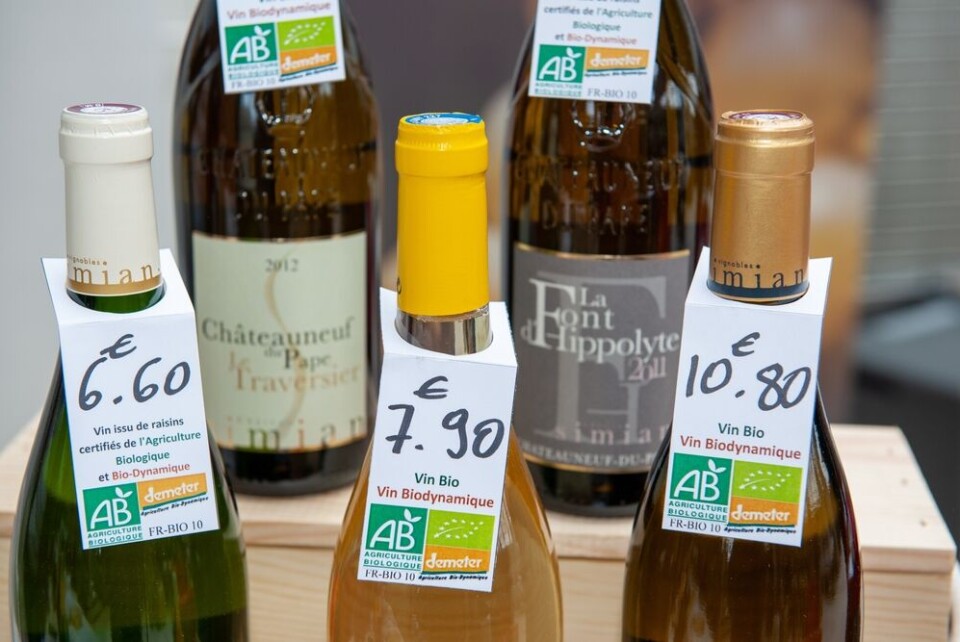-
‘It’s the place we are happiest’: George Clooney and family become French
‘My kids have a much better life [and] speak perfect French’, the Hollywood star says
-
Power outage suspends all Eurostar and Eurotunnel travel
A power outage in the Channel Tunnel has caused mass disruption
-
Explained: France's ‘Grand Froid’ plan and what it does
Several departments including Paris have enacted plans for cold temperatures
French supermarkets prepare to launch traditional ‘Foires aux Vins’
The annual event sees many wines on offer at lower-than-normal prices but the involvement of supermarkets in wine sales is still considered controversial by some

Supermarkets and hypermarkets across France are to host events for the traditional Foire aux Vins festival next month, including a wide selection of low-priced varieties on offer.
The tradition dates back to the early 1970s when the E. Leclerc chain of supermarket groups started a September wine promotion. Initially, it only took place in the northwest.
However, the chain rolled out the idea, and it was quickly copied by other supermarket groups, as well as independent cavistes (wine sellers).
Now, the event takes place every year, in supermarkets, independent shops, and online. In a typical Foire aux Vins event, the shop will have many more shelves devoted to wine and at wider price ranges, in comparison to its usual selection.
Supermarkets typically also offer specially printed catalogues with wine selections, set out by region, to allow customers to browse the in-demand options ahead of time. It is not uncommon for queues to form outside supermarkets on the first day of the event, as customers line up to buy the wines they have carefully marked up in the catalogues.
How important is the Foire aux Vins to wine sales?
Wine sold in supermarkets and hypermarkets now accounts for 90% of the wine French people buy to drink at home, show the latest available figures (2021-22) from government agency FranceAgriMer.
Yet, the major supermarkets did not respond to The Connexion’s requests for comment on this year’s event.
This may be because the dominance of grandes surfaces (large supermarkets) in the market is still somewhat controversial in the wine industry, especially among some smaller producers.
The Bordeaux Wine Trades Council estimates that as much as 18% of Bordeaux wine sales are sold during the Foire aux Vins event. In contrast, the event is less important to Provence; with an estimated only 6% of sales of wine from this region sold.
Another Bordeaux rival, the Bourgogne region, told The Connexion that the event is “not important for us”, and “only interests a few producers in Bourgogne”.
For years, supermarkets have been buying Bordeaux wines ‘en primeur’, which refers to wine that is only a year old and still in barrels, and which is later sold for bottling. This is in contrast to the normal process, which usually takes between two and five years for typical Bordeaux wines, for example.
Both fine wines and cheaper varieties are bought in this way. The more expensive often go for €15 per bottle, while the cheaper types are often sold by the case, with ‘buy five and get one free’-style offers.
Champagne can also be found during the event, but a lack of production this year has had a knock-on effect on prices; few bottles are being sold below €20, in comparison to last year, when some were on offer for €12-15.
The inclusion of Champagne in the Foire Aux Vins event appears somewhat controversial too.
A spokeswoman for the wine’s trade body, la Comité Champagne, told The Connexion: “We have no figures at all relating to the Foire aux Vins. We collect no statistics, we have no idea how much Champagne is sold in them or how important they are.
“Each Champagne house can sell their Champagne as they wish. But we have no idea how many do so during the Foire, or whether the Foire is important for them or not.”
Supermarkets and sales
Despite the ‘sales’ image, only a proportion of the wines during a Foire Aux Vins event will be listed as official ‘soldes’, because of strict rules on supermarket sales.
These came in with the loi Egalim in 2019. The law states that supermarkets and online sellers can only discount prices by a maximum of 34%, to ensure that the lowest possible price is still 10% above the amount at which the producer would begin to make a loss.
France is still the second-largest wine market in the world, behind only the United States, says FranceAgriMer.
The agency's figures say that in 2021, 25.2 million hectolitres were consumed, a 9% increase compared to 2020. This equates to 47 litres of wine drunk per person per year, or 62 standard-sized bottles. Of this, 43% is red wine, 20% is white, and 37% is rosé.
Read more: People in France are still biggest drinkers of rosé wine in world
Wine production sales in France are worth €12billion alone, while associated industries account for an extra €17billion.
Yet, sales of wine in France have been decreasing; prompting one national winemaker cooperative recently to call for producers to adapt their production and export more to cope.
Related articles
The wine industry is in constant evolution in France and beyond
Where in France do people admit to drinking too much alcohol?
























